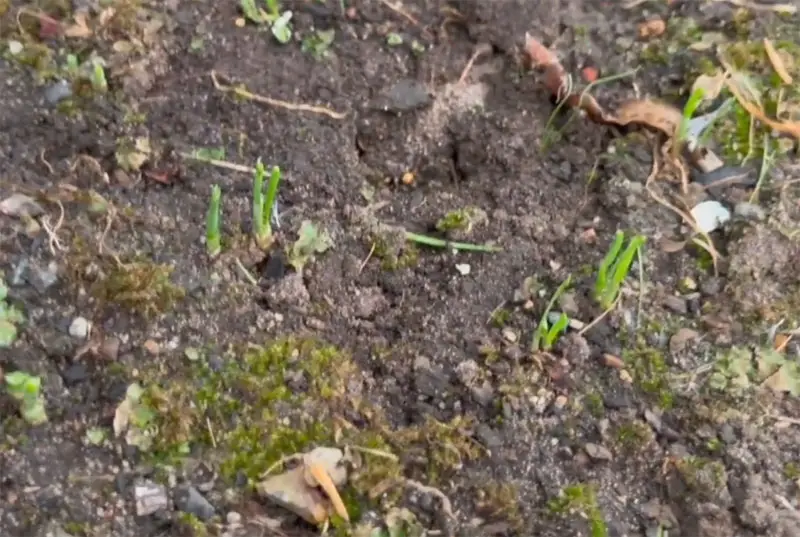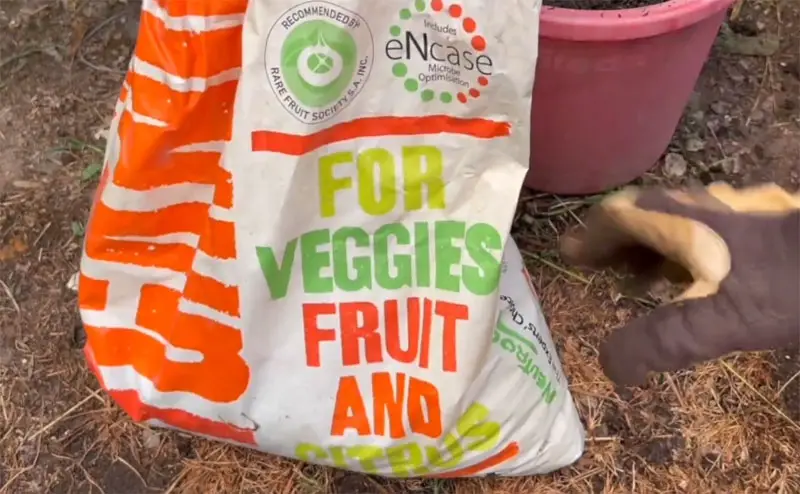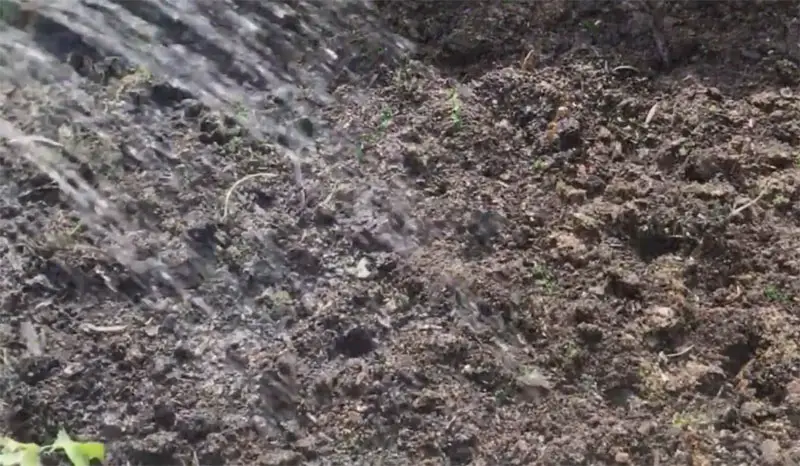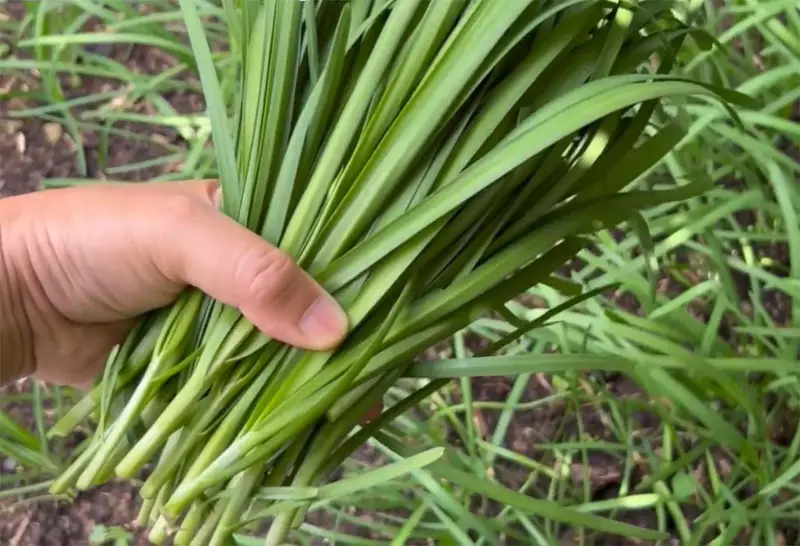Leeks are a popular vegetable, appreciated for their mild onion-like flavor and versatility in cooking. Growing leeks can be an enjoyable and rewarding experience, but it is important to understand the necessary steps for cultivation. If you wish to grow the leeks thick and big, and also without pests and diseases, then you will want to know how to do it.
How To Grow Leeks From Seed
Growing leeks from seed is an endeavor that requires planning and patience. A gardener must have the right tools, time, and suitable conditions in order to successfully grow leeks from seed. The first step towards the successful cultivation of leeks is to choose a variety that suits the intended climate and soil type. Leeks are a cold-weather crop and prefer full sun exposure with well-drained soil that has been amended with plenty of organic matter.
Once the variety of leek is chosen, it is time to purchase high-quality seeds. To ensure the finest quality, when choosing seed packets, look for seeds that have been kept in airtight containers in cold, dark locations. Once purchased, keep them chilled until you’re ready to plant them.
The next step is to loosen up the soil and remove any weeds or debris from the planting area. After preparing the soil, plant the seeds 1/4 inch deep, separating them by an inch. If starting indoors, sow four weeks before the last frost date; if starting outdoors wait until two weeks before the last frost date. Keep soil moist but not soaking wet; water every few days depending on weather conditions. Leeks should be ready to harvest within two months of sowing seeds but may take longer depending on region and weather conditions.
How To Grow Leeks From Roots
Growing leeks from roots is another way to get a successful harvest. To do this, select healthy, disease-free leek seedlings or bare root divisions. Make sure the soil is well-drained and lightly moist before planting. Dig a hole that is twice as deep and wide as the root system of the leek and place it in the center. Backfill with soil and pat down gently to ensure that there are no air pockets or areas of soggy soil. Water lightly after planting.
Leek roots will benefit from mulch around them for optimal growth and moisture retention; use organic material such as straw or wood chips to help keep weeds away and keep the soil temperature even throughout the season. Leeks require consistent watering for optimal growth; too much or too little can cause them to bolt prematurely or become stunted in growth.
Harvest your leeks when they reach your desired size by cutting them off at soil level with a sharp knife or scissors. Be sure to leave some roots attached as this will help keep them growing longer and prevent them from going to seed prematurely. Enjoy your delicious homegrown leeks as soon as they are ready!
How To Grow Leeks In Toilet Rolls
Growing leeks in toilet rolls is an innovative way to get a head start on the growing season. This method requires little space and can be easily done indoors or outdoors. In order to begin, toilet rolls must first be prepped. To do this, soak the rolls in water for several minutes and then tear them into sections of three or four layers depending on the desired size of the plant. Place soil on top of the rolls before inserting a few seeds per roll section.
After the toilet roll parts are ready, they should be put in a tray with drainage holes and moistened just a little with water. As too much heat can harm the seedlings, place the tray in a warm area out of direct sunshine. Keep the soil moist by watering regularly so it does not dry out completely; when ready to transplant, gently pull apart each section and transfer them into their own pots with fresh potting mix.
Leek seedlings grown in toilet rolls require extra care to ensure successful transplanting; check often for signs of root growth before proceeding with transplanting. Once transplanted, continue providing adequate water and wait for the leeks to reach full maturity within two months or longer depending on region and weather conditions. If they are taken care of properly, these leeks will provide a delectable harvest that can be eaten at any time of the year.
How To Grow Leeks In Pots
Growing leeks in pots is a popular and easy way to get a successful harvest. To begin, select a pot that is at least 6-12 inches deep with drainage holes. Fill the pot with good quality, well-draining soil and mix in some compost for additional nutrients. To ensure that the soil is moist but not waterlogged, plant the seeds approximately an inch deep.
Place the pot in full sun or partial shade depending on location and weather conditions. Water regularly and mulch around the base of the plants to help retain moisture and protect from extreme temperature changes. Leeks require consistent watering for optimal growth; too much or too little can cause them to bolt prematurely or become stunted in growth.
Harvest leeks when they reach your desired size by cutting them off at soil level with a sharp knife or scissors. Be sure to leave some roots attached as this will help keep them growing longer and prevent them from going to seed prematurely. Enjoy your delicious homegrown leeks as soon as they are ready!
How To Grow Leeks In Water
Growing leeks in water is an alternative way to cultivate these tasty vegetables. Start by adding some liquid fertilizer to some clean water in a container; make sure the container is big enough for the leeks to grow in without touching one another. Place the healthy seedlings or divisions into the water-fertilizer mixture, leaving enough room between them for good growth. Keep in mind that plants grown in water will require more regular fertilization than those grown in soil.
The leeks should be kept in a location where they will receive plenty of indirect sunlight, such as near a window or on a porch with some shade cloth. Change out the water every few days and keep it consistently moist, as dryness can cause stunted growth or even death of the plant. Harvest your leeks when they reach your desired size by cutting them off at soil level with a sharp knife or scissors.
Leek roots grown in water can also benefit from occasional foliar sprays of liquid fertilizer for optimal growth and yield; just make sure not to oversaturate the plant as this can lead to root rot and other diseases.
Growing Leeks Problems
Even though growing leeks can offer you a gratifying experience, there are also many issues that you need to take care of if you want to grow them healthily. Leeks frequently experience bolting, which happens when the plant quickly shoots up a tall flower stalk and develops seeds before forming edible leaves. This can be brought on by excessive nitrogen fertilization or exposure to hot temperatures; in either instance, the issue can be solved by assuring correct fertilization levels and maintaining temperatures below 75°F.
Pests and diseases are other concerns to be aware of, as both can seriously harm plants if not treated right away. Leeks are particularly susceptible to slug and snail attacks, so it’s crucial to periodically inspect plants for damage and take action as soon as possible. Ample drainage and avoiding overhead irrigation will help prevent fungal diseases like downy mildew or basal rot from developing if conditions are too moist or humid.
Leeks should not be overplanted because this can result in poor growth and low yields. For optimum growth and yield, make sure to leave ample room between each seedling or division; for the best results, a spacing of 6–8 inches between plants is typically advised.
Quality Soil Plays the Most Important Part
The first point is about the soil for growing leeks. However, leeks are very adaptable to most soils, whether it is clay, sand, loam, or any type of soil. Leeks have no problem growing on them.
But although it can grow in different soils, it has a lot to do with the soil quality.
To grow leeks, proper soil is still very important. Only with proper soil can the roots of leeks grow well.
Once the leek is well raised, the roots will grow thick and long while the leek leaves will grow one after another.
It is best to use soil that is:
- rich in organic matter
- has a strong moisturizing
- has strong fertilizer retention capabilities
- is well-drained
Sandy loam is the best choice among all the soils that feature all the above-mentioned characteristics for you to grow leeks.
In addition, don’t plant leeks in soil that is sterilized, or soil that is too acidic. For example, less acidic and neutral soil is more suitable, where the pH value is between 6.0-7.5.
For the soil that I use to plant leeks on my vegetable farm, its pH value is 7.0.
Apply Fertilizer At The Right Time
If you want leeks to grow well, fertilizer is another important factor. You cannot simply apply fertilizer at any time. You need to fertilize follow different times and seasons.
For example, there is no need for you to fertilize during winter because leeks grow very slowly in winter and are in a semi-dormant state.
In the spring, since the weather is just getting warmer, you can fertilize once in the spring.
In summer, when leeks grow fastest, you can apply fertilizer two or three times.
Then comes autumn. Before autumn enters the winter, you can topdress the leeks again to prepare for winter cultivation and nutritional supplementation.
So what kind of fertilizer do you use to fertilize leeks? How to apply specifically?
For me, I usually fertilize after the leeks are harvested.
I normally will use scissors to cut the leeks, and some people will use a knife to cut it, this is a completely personal habit and anyway will do.
After harvesting the leeks, the ground is so bare. If there are weeds, you can pull the weeds by the way.
Note that this is not the best time to fertilize the leeks yet, because the wounds on the rhizomes of the leeks that have just been cut have not healed, and they are still relatively wet.
Fertilizing at this time may allow the bacteria to invade the leeks from the cut wound. So it is best to wait two to three days before fertilizing.
Two or three days later, you can take a look at the leek cuts. You’ll find that the cut wound has dried out and started to grow new leek leaves.
After five days, they may have grown three or four centimeters and it is the best time for you to fertilize the leeks now.
If there is soil compaction, you can loosen the soil near the leek roots.
So what kind of fertilizer is suitable to fertilize the leeks?
It is always recommended that you use organic fertilizer if you want to grow organic vegetables.
Secondly, since we mainly eat the leaves of leeks, the most important fertilizer will be nitrogen, phosphorus, potassium, and calcium. Having these ingredients in your fertilizer will help to make the roots develop better and improve the immunity of leeks against diseases and pests.
Can You DIY Your Compost?
If you are an eco-friendly person who doesn’t want to throw away your kitchen and garden waste, you can DIY your compost.
However, if you got nothing for making your compost, you can also buy a bag of fermented compost. It won’t cost you too much money.
For example, cow, sheep, or chicken dung can be used to make compost. But they cannot be used right away. They need to be fermented before use.
There is organic compound fertilizer for vegetable and fruit trees available on the market. This type of fertilizer is having natural organic ingredients in it, which are safe, nutritious, and comprehensive.
Generally, it contained bone manure, and some are fermented with organic substances such as seaweed. Moreover, it is made into powder and granules, which are very convenient to use.
I used to use manure and compost to fertilize the leeks. My compost generally contains chicken manure, grass, fish, and dried leaves. It is full of nutrients.
But recently I ran out of manure at home. Therefore, sometime I will buy the organic compound fertilizer and apply it to my vegetable garden.
You can mix the compost and organic compound fertilizer. If you don’t put compost and only apply organic compound fertilizer without compost, you can mix it with soil.
After fertilizing, the next step is very simple. You just need to sprinkle the leeks that have just grown little new leaves.
Don’t forget to add some water at the end, so the overgrown leeks will grow faster, thicker, and longer.
After 15 days of fertilizing, you can harvest another crop at this time.
If you fertilize the leeks in summer when they are growing the fastest, you will be able to harvest them just about 20 days away from your last harvest.
However, if the temperature is relatively low in spring and autumn, it cannot be harvested in such a short time. It will take about a month or so for you to harvest again.
When harvesting leeks, they must be harvested when the leeks are clean and tender. Otherwise, if it lasts for two days, the leek moss will become hard and won’t be so good to consume.
If your leeks have not been harvested in time and have grown old, and are about to bloom, or have already bloomed, you may just leave them and let them continue to bloom so that you can harvest some leek seeds.
Transplant the Leeks Every Two to Three Years
Maybe some people know about the first two points as mentioned earlier, but many people may not know about this third trick to make leeks grow well. That is, leeks need to be transplanted every two to three years.
The method is to dig out the roots after harvesting the leek leaves and plant them in other areas.
Why Need To Do So?
There are three reasons behind it:
1. After the leek roots have been continuously planted for several years, they will gradually age, and the vitality of growth will not be as good as before. At this time, you will need to dig out the plant and prune the old roots before planting, which can promote the issuance of new roots.
2. a few years later, the roots of the leeks will be very dense and crowded, which will affect their nutrient absorption.
3. If the same crop is planted for several years in a row, many bacteria and pests will accumulate in the soil, which will cause diseases and pests to the leeks.
This is why many people say that the leeks they planted had grown well in the first two years. After that, many budworms suddenly appeared, and they have grown thinner than before.
When this happens, it tells you that you need to transplant. Usually, I will transplant the leeks into another vegetable bed in the third year.
It is not so difficult for you to carry out the transplant job. All you need to do is just harvest the leek leaves, and then use a small shovel to dig out the leek root. When you dig the root out, you will find that some leeks are growing on one root. If so, you can break off the root, called root splitting.
As more and more root splitting you are doing, the more and more leeks you can plant. After some time, you will have a large area of leeks in your vegetable garden.





